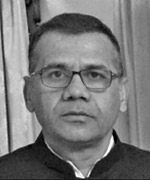Lean and Agile
 R.C. Sharma
R.C. Sharma
Border guarding forces comprising Border Security Force (BSF), Indo-Tibetan Border Police (ITBP) and Shastra Seema Bal (SSB) are peacetime sentinels of India’s borders. Border Security Force guards Indo-Pakistan and Indo-Bangladesh borders, ITBP Indo-China and SSB Indo-Nepal and Indo-Bhutan borders. Assam Rifles shoulders the responsibility of guarding the Indo-Myanmar border. During war and hostilities, they also have assigned wartime roles under the operational control of the army.
In a recent article, Brig. Jaspal Singh (retd) wrote that the border security structure is plagued with adhocism. According to him, “Presently our border management is indicative of adhocism when viewed in the context of mission statement and structure of the security forces assigned towards the surveillance and security of various segments of our international borders”. The analysis focussed on both macro and micro management of border guarding CAPFs. It calls for and rightly so, avoiding duplicity and for a single point of command and control with the army on de facto borders for better operational synergy and coordination.
It also questions not following the norm of ‘one border one force’ in the case of the Indo-Pakistan and Indo-Bangladesh border with BSF deployed on both borders. His assessment concerning the deployment of BSF is flawed since Indo-Pakistan and Indo-Bangladesh are distinct borders. BSF is deployed on both borders in conformity and consonance with the recommendation of a group of ministers. His analysis concerning organisational reforms at the functional level in border guarding CAPFs does merit consideration.
There is no disputing the fact that border guarding CAPFs need reforms and reorganisation in command and control and organisational structure, aimed at making these organisations lean and thin, more penetrative and effective to meet present-day dynamic border security challenges. The reforms and reorganisation will usher in new life in the organisational structure improving operational, administrative and logistic efficiency and help in better integration of border guarding CAPFs in the theatrisation process, whereby they become part of respective theatre commands for effective fulfilment of their peace and wartime roles. There is also a need for analysis concerning the utilisation of command headquarters of border guarding CAPFs in the overall theatrisation process.
Let us consider the management of international borders at macro and micro levels. What operational and organisational reforms are needed at both levels to make border guarding professionally more potent? Either deployment of border guarding CAPFs is on de jure or de facto borders or both. The reform process needs initiation considering both borders. Border Security Force and Indo-Tibetan Border Police are deployed on de facto borders alongside the army. At a macro level, the first and foremost is to recognise the pivotal role played by border guarding CAPFs on de facto borders and utilise their full operational potential. BSF is deployed on the line of control (LC) in small, isolated packets spread over a vast front with integral command having little role. There is a need to fully utilise the professional potential of the Border Security Force. For this purpose, make its deployment compact instead of deploying it in different command pockets over a wide front, diminishing and diluting the integral command structure.
As far as ITBP is concerned either it may be placed under the army’s operational control considering the present Chinese threat wi
Subscribe To Force
Fuel Fearless Journalism with Your Yearly Subscription
SUBSCRIBE NOW
We don’t tell you how to do your job…
But we put the environment in which you do your job in perspective, so that when you step out you do so with the complete picture.








